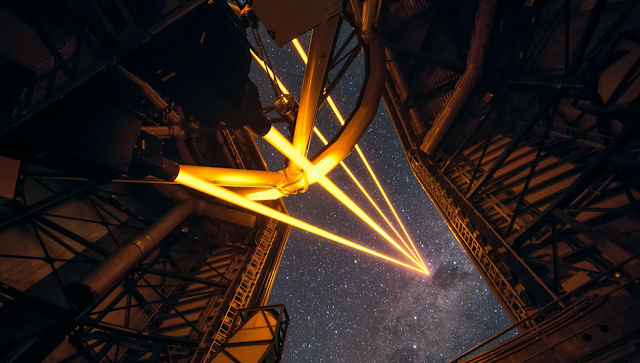My first time giving out stock tips on Astronomical Returns (albeit 4 years stale)...
Read to the end to see what stock I pitched, back in the day!
_______________________________________________________________
A few months ago before coronavirus shut everything down, a friend I've known since middle school came down from UC Berkeley to visit Los Angeles, so we checked out the Griffith Observatory! Dedicated in 1935, the Griffith Observatory is an immensely popular tourist destination, featuring its historic 12-inch Zeiss refracting telescope and a fantastic view of the Hollywood sign and downtown LA. Even better, my friend is a PhD candidate in optics (or in fancier science terms, visual psychophysics), so who better to give me a rundown of the technology behind cutting-edge telescopes?
 |
| February 16, 2020 - I'm on the far right, my friend JT is on the far left |
Admittedly, my knowledge of optical science is pretty rudimentary. I distinctly recall struggling through light ray diagrams in physics during freshman year of high school. Our teacher was fantastic but incredibly tough; we had these brutal labs where we reflected an image of an arrow through a series of lenses, and we had to accurately predict whether it would appear enlarged/shrunk, upright/inverted, real/virtual, etc. Just digging up the suppressed memory sends chills down my spine...
 |
| Picture 14-year-old me (10 years ago) utterly biting the dust trying to depict my light ray diagrams to my teachers' satisfaction |
At the Griffith Observatory, I learned about the adaptive optics installed on more modern telescopes around the world today. Using what's known as a "laser guide star," these powerful observatories can correct for atmospheric distortions in order to produce clearer images of the cosmos. In fact, you've probably seen pictures of them before - they look like menacing lasers fired from metal domes into the night sky, an image reminiscent of the Death Star from Star Wars
 |
| If only the laser could be green instead of orange, then it'd really look like we were blowing Alderaan to smithereens! | Video credit here |
Here's the gist of how they work: when attempting to observe the Universe from the Earth, an astronomer's image is distorted by the movements of the turbulent atmosphere, similar to how if you were at the bottom of a pool looking up at the sky, the image you see is incredibly distorted due to the ripples and waves at the surface of the water. So our goal becomes clear: what if we could isolate and subtract out this interference in real time when observing the sky?
 |
| Watch this video for a great visualization - the square magnets you see bend the flexible mirror to cancel out the distortion |
To do this, the telescope fires an incredibly powerful laser with a wavelength of exactly 589.2 nanometers, specifically to energize the sodium layer in the mesosphere (I had no idea such a sodium layer existed! Look it up). The excited sodium atoms reemit that energy, producing a star-like point of light. The telescope then detects exactly how that artificial star twinkles, translating the distortion into electrical signals which are fed into a computer. The computer controls tiny electric magnets behind the telescope's flexible mirror, which bend and distort the mirror ever so slightly in a way that perfectly cancels out the observed atmospheric turbulence! Pretty neat huh?
 |
| What a difference adaptive optics made in the images of the star cluster (above) and Neptune (below)! |
On a personal note, visiting Griffith Observatory was a little quest of my own coming full circle. Four years ago when I was a sophomore finance major at UT Austin, I came to LA to compete at the USC National Stock Pitch against teams from other colleges across the country. Not only did my team lose despite pulling multiple all-nighters in preparation for the competition, that night after the event, we drove all the way to visit Griffith Observatory (one of my teammates even getting a traffic ticket from LAPD in the process) only to find out it was closed!! Returning four years later now working for SpaceX, I was proud to wear my undergrad investment team's T-shirt to the top!
 |
| There I am in 2016! Though my team lost, another UT Austin team won, so I was happy for my friends |
And if you're curious what stock my team pitched, it was an industrial water technology company called Xylem, Inc. (NYSE: XYL). I'm still salty we lost, but I bought some shares for myself since I thought we had a great pitch. Lo and behold, two years later the stock was up almost 100%!! Call it great analysis or sheer luck, but I say the best revenge is a
 |
| Download the full slide deck here! I wouldn't make any trades on it though, all the analysis is 4 years old now! |



No comments